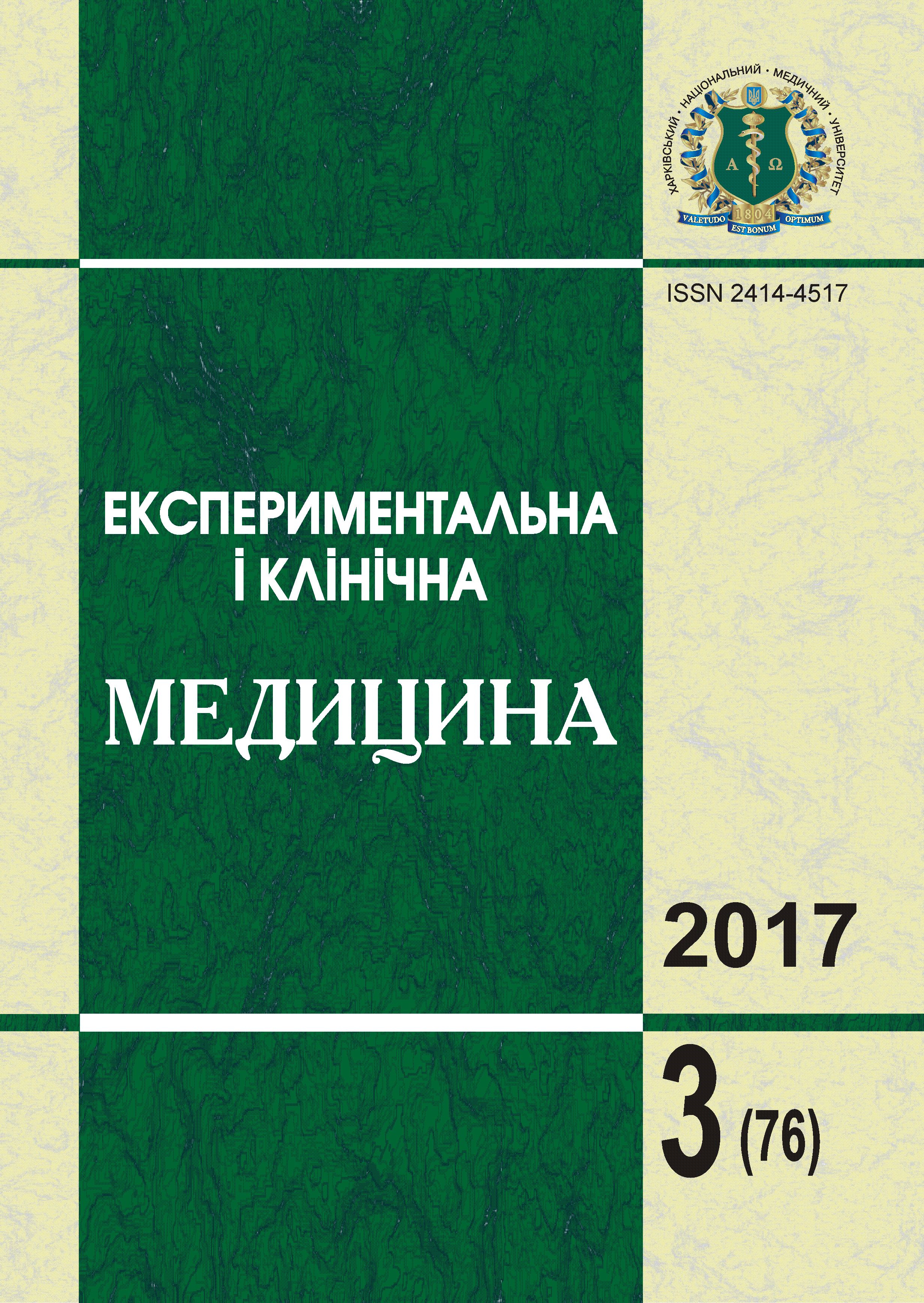Abstract
A retrospective, single-center, observational cohort study of 80 patients with severe traumatic brain injury after craniotomy was conducted. It was revealed that the indicators that affect the survival prognosis of patients with severe traumatic brain injury after craniotomy were age, the presence of concomitant pathology, the level of consciousness impairment according to the Glasgow Coma Scale, the magnitude of the displacement of the median brain structures by Magnetic resonance imaging, and the need for sympathomimetic support; a low level of total protein, a high level of creatinine, and an increase in Activated Partial Thromboplastin Time in the blood. Particular attention is drawn to the use of analgosedation as an important component of post-operative intensive care, which should be present in patients with severe traumatic brain injury.References
Chepkyj L.P., Minov S.V., Chernyshov V.I. Patoghenez, klinika, proghnozuvannja ta profilaktyka poliorghannoji nedostatnosti pry cherepno-mozkovij travmi. Ukrajinsjkyj nejrokhirurghichnyj zhurnal. 2011. № 2. S. 56–59.
Pavlenko I.A., Chepkyj L.P., Ivanjushko O.V., Iljchyshyn R.O. Endoghenna intoksykacija ta jiji korekcija pry cherepno-mozkovij travmi. Ukrajinsjkyj nejrokhirurghichnyj zhurnal. 2004. № 2. S. 68–71.
Rudel V., Leitgeb J., Janciak I. et al. Severe traumatic brain injury in Austria. Bulletin of Intensive Care. 2008. № 1. С. 41–46.
Koverko Ya.A., Ushakov D.A. Osobennosti diagnostiki i lecheniya cherepno-mozgovoy travmy u bolnykh pozhilogo i starcheskogo vozrasta. Bulletin of Medical Internet Conferences. 2012. № 2 (2). S. 86.
Sadova V.A. Osobennosti reaktsii sistemy POL AOS pri oslozhnennom techenii cherepno-mozgovoy travmy. Vestnik YuUrGU. 2012. № 28. S. 96–99.
Kryzhanovskiy, G.N. Obshchaya patofiziologiya nervnoy sistemy. M.: Meditsina, 1997. 352 s.
Minov S.V., Chepkyj L.P., Ghavrysh R.V. Vplyv rannikh syndromiv systemnoji zapaljnoji vidpovidi ta poliorghannoji nedostatnosti na chastotu ghnijno-zapaljnykh uskladnenj u poterpilykh z cherepno-mozkovoju travmoju. Ukrajinsjkyj nejrokhirurghichnyj zhurnal. 2011. № 1. S. 66–70.
Smail N., Messiah A., Edouard A. Role of systemic inflammatory response syndrome and infection in the occurrence of early multiple organ dysfunction syndrome following severe trauma. Intens. Care Med. 1995. V. 21, № 10. P. 813–817.
Bone R.C. A personal experience with SIRS and MODS. Crit. Care Med. 1996. V. 24, № 8. Р. 1417–1418.
Unzhakov V.V., Sukhotin S.K. Vliyanie razlichnykh metodov sedatsii u bolnykh s ostroy tyazheloy cherepno-mozgovoy travmoy na perekisnoe okislenie lipidov. Obshchaya reanimatologiya. 2008. № 4 (5). S. 10–13.
Kuchyn Ju.L. Ghiperalghezija pry likuvanni pacijentiv u ghostromu periodi cherepno-mozkovoji travmy. Medycyna neotlozhnykh sostojanyj. 2015. № 1 (64). S. 64–66.
Joint commission on accreditation of Healthcare Organization. Pain standards 2001. hptt//jcaho.org
Kress J.P., Pohlman A.S., O’Connor M.F., Hall J.B. Daily interruption of sedative infusions in critically ill patients undergoing mechanical ventilation. N. Engl. J. Med. 2000. V. 342. P. 1471–1477.
Freire A.X., Afessa B., Cawley P. et al. Characteristics associated with analgesia ordering in the intensive care unit and relationships with outcome // Crit. Care Med. 2002. V. 30. P. 2468–2472.
Riker R.R., Fraser G.L. Adverse events associated with sedatives, analgesics, and other drugs that provide patient comfort in the intensive care unit // Pharmacotherapy. 2005. V. 25. P. 8–18.
Cherniy V.I. Terapiya cherepno-mozgovoy travmy s pozitsii dokazatelnoy meditsiny. Meditsina neotlozhnykh sostoyaniy. 2013. № 4 (51). S. 37–42.
Guidelines for the management of severe traumatic. Brain Injury; 3rd ed., Brain Trauma Foundation 2007, www.braintrauma.org.
Devabhakthuni S., Armahizer M.J., Dasta J.F., Kane-Gill S.L. Analgosedation: A Paradigm Shift in Intensive Care Unit Sedation Practice. Annals of Pharmacotherapy. 2012. V. 46. Р. 530–540.
